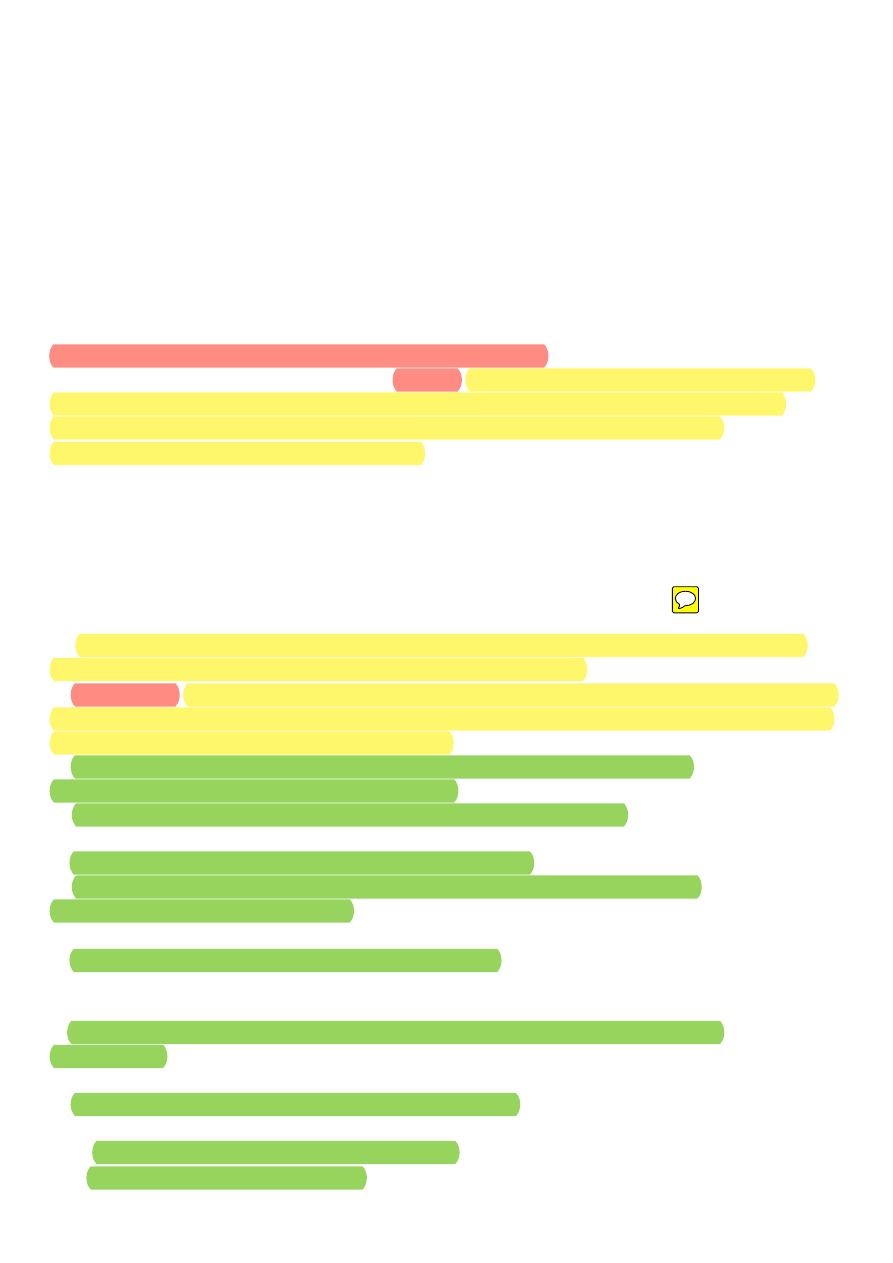
Child Psychiatry
Intellectual developmental disorder (MENTAL RETARDATION)
DSM-5 define intellectual functioning as a general mental ability that involves reasoning,
problem solving, planning, abstract thinking, comprehension of complex ideas, judgment,
academic learning, and learning from experience. In DSM-5, the definition is applied to
reasoning in three contexts: academic learning (conceptual domain), social understanding
(social domain), and practical understanding (practical domain).
ETIOLOGY
The most common causes of mental retardation are Down syndrome, fragile X syndrome
(accounting for 40% of all X-linked retardation), and fetal alcohol syndrome. Together, these
three conditions are responsible for about 30 percent of all identified cases of mental
retardation. Recently, early childhood anemia has been identified as a risk for mild to
moderate mental retardation.
Causes:
Congenital, chromosome or gene defects.
Intrauterine infections.
Perinatal: anoxia, intraventricular haemorrhage …
Postnatal: encephalitis, meningitis, trauma …
Psychosocial causes; chronic lack of intellectual stimulation.
The prevalence rate is probably below 3% but above 1%
Several variables lower life expectancies. For example, many early deaths—sometimes for
persons in their 20s and 30s—are related to ambulatory and respiratory problems. Etiology
may also play a role. Specifically, children with Down syndrome continue to be prone to
heart problems, leukemia, and (by age 35) the plaques and tangles of Alzheimer's disease.
Similarly, children with Prader-Willi syndrome are prone to hyperphagia and obesity, and
complications of obesity (e.g., diabetes, heart disease) remain the main cause of higher death
rates for persons with Prader-Willi syndrome.
DSM V Diagnostic Criteria for Intellectual Disability:
Intellectual disability (intellectual developmental disorder) is a disorder with onset during
the developmental period that includes both intellectual and adaptive functioning deficits
in conceptual, social, and practical domains. The following three criteria must be met:
A. Deficits in intellectual functions, such as reasoning, problem solving, planning, abstract
thinking, judgment, academic learning, and learning from experience, confirmed by
both clinical assessment and individualized, standardized intelligence testing.
B. Deficits in adaptive functioning that result in failure to meet developmental and
sociocultural standards for personal independence and social responsibility. Without
ongoing support, the adaptive deficits limit functioning in one or more activities of
daily life, such as communication, social participation, and independent living, across
multiple environments, such as home, school, work, and community.
C. Onset of intellectual and adaptive deficits during the developmental period. Code based
on degree of severity reflecting level of intellectual impairment:

Mild mental retardation: IQ level 50–55 to approximately 70
Moderate retardation: IQ level 35–40 to 50–55
Severe mental retardation: IQ level 20–25 to 35–40
Profound mental retardation: IQ level below 20 or 25
1. Mild Mental Retardation (I.Q., 55 to 70) characterizes the largest group of persons
with mental retardation, possibly as many as 85 percent of the total. These individuals
appear similar to non retarded individuals and often blend into the general population
in the years before and after formal schooling. Many achieve academic skills at the
sixth grade level or higher, and some graduate from high school. As adults, many of
these individuals hold jobs, marry, and raise families—yet at times they may appear
slow or need extra help negotiating life's problems and tasks.
2. Moderate Mental Retardation Moderate mental retardation (I.Q., 40 to 55) is seen in
approximately 10 percent of those with mental retardation, including persons with
more-impaired cognitive and adaptive functioning. Individuals with moderate mental
retardation typically receive their diagnosis in their preschool years, and some show a
clear organic cause for their delay. Persons with Down syndrome often function in this
range. Most children with moderate mental retardation require special education
services and achieve academic skills at the second to third grade level. Supportive
services are needed throughout life. With proper supports, many live, work, and thrive
in their local communities.
3. Severe mental retardation (I.Q. 25 to 40) occurs in about 3 to 4 percent of persons with
mental retardation. Individuals at this level often have one or more organic causes for
their delay, and many show concurrent motor, ambulatory, and neurological problems
as well as poorly developed communication skills. Most persons with severe mental
retardation require close supervision and specialized care throughout their lives. Some
individuals learn to perform simple tasks or routines that facilitate their self-care.
4. Profound Mental Retardation Profound mental retardation (I.Q. of 25 or below) affects
relatively few individuals (1 to 2 percent) and involves pervasive deficits in cognitive,
motor, and communicative functioning. Impaired sensory-motor functioning is often
seen from early childhood on, and most individuals require extensive training to
complete even the most rudimentary aspects of self-care such as eating and toileting.
The vast majority of people with profound mental retardation have organic causes for
their delay, and most require total supervision and care throughout life.
Autism spectrum disorders (ASD)
Characteristics of autistic disorder, a severe form of ASD, include
a. Significant problems with communication (despite normal hearing)
b. Significant problems forming social relationships (including those with caregivers)
c. Repetitive, purposeless behavior (e.g., spinning, self-injury)
d. Subnormal intelligence in many (26%–75%) autistic children
e. Unusual abilities in some children (e.g., exceptional memory or calculation skills). These
are referred to as savant skills.
Asperger disorder (a mild form of ASD) involves
a. Significant problems forming social relationships
b. Repetitive behavior and intense interest in obscure subjects

c. In contrast to autistic disorder, in Asperger disorder there is normal cognitive development
and little or no developmental language delay. However, conversational language skills are
impaired.
d. aggressiveness
Occurrence of ASD
a. They occur in about 17 children per 10,000.
b. They begin before 3 years of age.
c. The disorders are four to five times more common in boys.
4. Abnormalities that give clues for the etiology of ASD include
a. Cerebral dysfunction (no psychological causes have been identified)
b. A history of perinatal complications
c. A genetic component (e.g., the concordance rate for ASD is three times higher in
monozygotic than in dizygotic twins)
d. Immunologic incompatibility between mother and fetus
e. Smaller amygdala and hippocampus, fewer Purkinje cells in the cerebellum, and less
circulating oxytocin
Other pervasive developmental disorders
1. Rett disorder involves
a. Diminished social, verbal, and cognitive development after up to 4 years of normal
functioning
b. Occurrence only in girls (Rett disorder is X-linked and affected males die before birth)
c. Stereotyped, hand-wringing movements; ataxia
d. Breathing problems
e. Mental retardation
f. Motor problems later in the illness
Management:The goal of treatment is to reduce disruptive behavior and to promote learning
particularly language acquisition and communication and self-help skills.
(a) Pharmacological
No pharmacological agent has proved curative but certain medications may be of benefit for
specific symptoms such as self-injury, aggression, stereotyped movements and over activity.
Haloperidol and Risperidone: May decrease stereotyped behaviors and Agitation. Fluoxetine
and Citalopram: Reduce repetitive behavior and impulsive aggressions.
(b) Psychological
Autism is generally considered a lifelong, chronic disability. Nevertheless, specific
educational and therapeutic interventions are critical for stimulating development in all areas
and improving the person’s adaptive functioning in all settings (home, school, work
and community).
Adolescents and adults with autism frequently need specific help in negotiating the
complexities of life demands. Social skills groups, recreational activities, individual
psychotherapy, and vocational coaching and assistance can help them acquire skills
necessary for a satisfying adult life.
With appropriate educational and treatment services, children with autism will show some
improvements. The preschool years are typically the most difficult, because children with

autism tend to be the least social, least communicative, and have the most difficulties
behaviorally.
IQ remains stable across the lifespan, but the severity of the social and communicative
deficits tends to diminish as children grow older. Learning continues throughout childhood
and adolescence, as long as children are receiving appropriate services.
Adolescence can be a difficult time for some individuals with autism, because of increased
sexual behavior and aggressiveness.
The most important positive prognostic indicators are functional language before age 5, and
cognitive abilities above the mentally retarded range (i.e., IQ > 70). Another 30% are
reported as achieving some degree of partial independence in adulthood. About 25% of
children with autism develop seizures beginning in adolescence or early adulthood.
ATTENTION-DEFICIT/HYPERACTIVITY DISORDER
Attention-deficit/hyperactivity disorder (ADHD) is the most common psychiatric disorder
among school-age children. Children with ADHD display the early onset of symptoms
consisting of developmentally inappropriate overactivity, inattention, academic
underachievement, and impulsive behavior.
Three different subtypes of ADHD may be diagnosed on the basis of the number and type of
symptoms from each category, with subtypes referred to as either ADHD, inattentive type;
ADHD, hyperactive-impulsive type; or ADHD, combined type. According to DSM-V,
symptoms of ADHD must be evident by age 12 years and have a minimum duration of 6
months.
Prevalence about 6%
DSM-V Diagnostic Criteria for Attention-Deficit/Hyperactivity Disorder
A. A persistent pattern of inattention and/or hyperactivity-impulsivity that interferes with
functioning or development, as characterized by (1) and/or (2):
1. Inattention: Six (or more) of the following symptoms have persisted for at least 6 months
to a degree that is inconsistent with developmental level and that negatively impacts directly
on social and academic/occupational activities:
a. Often fails to give close attention to details or makes careless mistakes in
schoolwork, at work, or during other activities .
b. Often has difficulty sustaining attention in tasks or play activities (e.g., has difficulty
remaining focused during lectures, conversations, or lengthy reading).
c. Often does not seem to listen when spoken to directly.
d. Often does not follow through on instructions and fails to finish schoolwork,
chores, or duties in the workplace (e.g., starts tasks but quickly loses focus
and is easily sidetracked).
e. Often has difficulty organizing tasks and activities (e.g., difficulty managing
sequential tasks; difficulty keeping materials and belongings in order;
messy, disorganized work; has poor time management; fails to meet deadlines).
f. Often avoids, dislikes, or is reluctant to engage in tasks that require sustained
mental effort (e.g., schoolwork or homework;, preparing reports, completing forms,
reviewing lengthy papers).
g. Often loses things necessary for tasks or activities (e.g., school materials,
keys, paperwork, eyeglasses, mobile telephones).
h. Is often easily distracted by extraneous stimuli.
i. Is often forgetful in daily activities (e.g., doing chores, running errands; for older

adolescents and adults, returning calls, paying bills, keeping appointments).
2. Hyperactivity and impulsivity: Six (or more) of the following symptoms have
persisted for at least 6 months to a degree that is inconsistent with developmental
level and that negatively impacts directly on social and academic/occupational
activities:
a. Often fidgets with or taps hands or feet or squirms in seat.
b. Often leaves seat in situations when remaining seated is expected.
c. Often runs about or climbs in situations where it is inappropriate.
d. Often unable to play or engage in leisure activities quietly.
e. Is often “on the go,” acting as if “driven by a motor” (e.g., is unable to be or
uncomfortable being still for extended time, as in restaurants, meetings).
f. Often talks excessively.
g. Often blurts out an answer before a question has been.
h. Often has difficulty waiting his or her turn (e.g., while waiting in line).
i. Often interrupts or intrudes on others.
B. Several inattentive or hyperactive-impulsive symptoms were present prior to age
12 years.
C. Several inattentive or hyperactive-impulsive symptoms are present in two or more
settings (e.g., at home, school, or work; with friends or relatives; in other activities).
D. There is clear evidence that the symptoms interfere with, or reduce the quality of,
social, academic, or occupational functioning.
E. The symptoms do not occur exclusively during the course of schizophrenia or another
psychotic disorder and are not better explained by another mental disorder
(e.g., mood disorder, anxiety disorder, dissociative disorder, personality disorder,
substance intoxication or withdrawal).
Code based on type:
Attention-deficit/hyperactivity disorder, combined type: if the criteria A1 and A2 are met
for the past 6 months
Attention-deficit/hyperactivity disorder, predominantly inattentive type: if criterion A1 is
met but criterion A2 is not met for the past 6 months
Attention-deficit/hyperactivity disorder, predominantly by active-impulsive type: if
criterion A2 is met but criterion A1 is not met for the past 6 months.
Treatment:
Stimulant medications have been found to reduce hyperactivity and improve attention
span in 75 % of cases, the exact mechanism of action is not yet known, however, stimulation
of cortical inhibition is suggested.
Dextroamphetamine (in children > 3 years) and methylphenidate (> 6 years) in the
morning and afternoon, doses are adjusted according to the response. Possible side effects
include restlessness, tremor, sleep disturbances, growth inhibition (growth chart is needed)
and dependence.
Psychological treatment: individual and family therapy.
Special education.
Prognosis: Hyperactivity improves with age in most cases. Some cases may continue in
adult life; mainly those with low intelligence and major learning problems.
Conduct Disorder:
Severe and prolonged antisocial behavior in older children and teenagers.
Features:

Aggressive behavior to other children.
Destructive behavior
Rebellion against parents
Fire setting
Lying
Truancy
Stealing
Vandalism
Etiology:
Adverse psychosocial situations play major roles e.g. broken family, unstable relationships,
and poverty.
Treatment:
Explore the environmental settings, social & family situations.
Family and individual therapies.
Haloperidol, lithium and carbamazepine have been found effective in controlling
aggression and impulsivity.
Prognosis: Some teenagers continue to have antisocial behaviour after the age of 18 (
antisocial personality disorder ).
Oppositional Defiant Disorder: Defiant hostile ant negativistic behavior, manifested by
frequent:
Loss of temper and anger outburst.
Argument and refusal to comply with adults.
Annoyance of others.
Spiteful / vindictive behavior. This disorder may coexist with ADHD, conduct and many
other disorders. It’s occurrence increases in families with rigid parents, and intense moody
children.
Treatment:
Psychological (individual / family).
Behaviour modification.
Carbamazepine or lithium.
Elimination Disorders
A. Functional Enuresis:
Repeated involuntary voiding of urine after the age at which continence is usual (5 years) in
the absence of any identified physical disorder.
Nocturnal = bed wetting (at night).
Diurnal = during waking hours.
Primary enuresis: If there has been no preceding period of urinary continence for at least 12
months.
Secondary enuresis: If there has been period of urinary continence for 12 months.
It is likely to coexist with other psychological distress (e.g. sibling birth).
Treatment:
Search for and treat any possible physical disease e.g. repeated urinary tract infections
(UTIs).
Treat any associated emotional problem.

Advice to parents (to avoid criticism…).
Fluid restrictions before bedtime.
Going to toilet before sleep.
-Behavioral therapy:
Star chart technique: Record dry nights on a calendar and reward dry nights with a star and
7 consecutive dry nights with a gift.
A bell and pad apparatus is helpful.
Bladder training.
- Drugs:
imipramine (a tricyclic antidepressant) 10 – 50 mg at night can reduce bed wetting
significantly, but relapse rate after discontinuing treatment is high.
desmopressin (an analogue of vasopressim) can be helpful but there is a risk of fluid
overload.
Functional Encopresis: Repeated passing of feces into inappropriate places after the age at
which bowel control is usual (4 years).
Physical causes should be ruled out: e.g. chronic constipation with overflow incontinence.
Stressful events at home may precipitate the condition.
Assessment should include parental attitudes, emotional factors in the child, and the
child’s concern about the problem.
Behavior therapy (rewarding success and ignoring failure) often is helpful.
Parental guidance and family therapy is required.
Separation Anxiety Disorders
; Excessive anxiety concerning separation from home or from major attachment figure for at
least 4 weeks.
Excessive distress when separation is anticipated.
Excessive worry about possible harm or losing attachment figures.
Reluctance to go to school because of fear of separation.
Excessive fear when left alone
Reluctance to sleep away from attachment figure.
The disorder may be initiated by a frightening experience or insecurity in the family, and is
often maintained by overprotective attitude of the parents. Treatment: Psychological
(individual / family) therapy. Behavior medication. Tricyclic antidepressants.
PHOBIAS IN CHILDREN Phobias are common, and usually normal in children. Common
feared objects and situations include: animals, strangers, darkness, and loud noisy voices.
Most childhood phobias improve without specific treatment measures. However, parents
should adopt a reasonable reassuring approach. Behavior treatment is required if phobia
persists.
School Phobia
: Irrational fear of going to school associated with unexplained physical
complaints such as headache, diarrhea, abdominal pain or feeling sick. Boys and girls are
equally affected.
Complaints occur on school days (not in weekends). It occurs most commonly at the
commencement of schooling, change of school or beginning of intermediate or secondary
school.

Academic achievement is good or superior.
_ Possible precipitating factors:
Separation anxiety (mainly in younger children) child wants to stay with a major
attachment figure. Mothers are frequently overprotective.
Minor physical illness.
Upsetting event either at home (e.g. parental discord), or at school (e.g. criticism).
General psychiatric problems e.g. low self - esteem and depression (in older children).
Treatment:
Identify and treat possible causes.
Early graded return to school (most helpful).
Both parents should participate.
School and teachers should be involved.
Drugs have some role in reducing anxiety / or depressive features.
